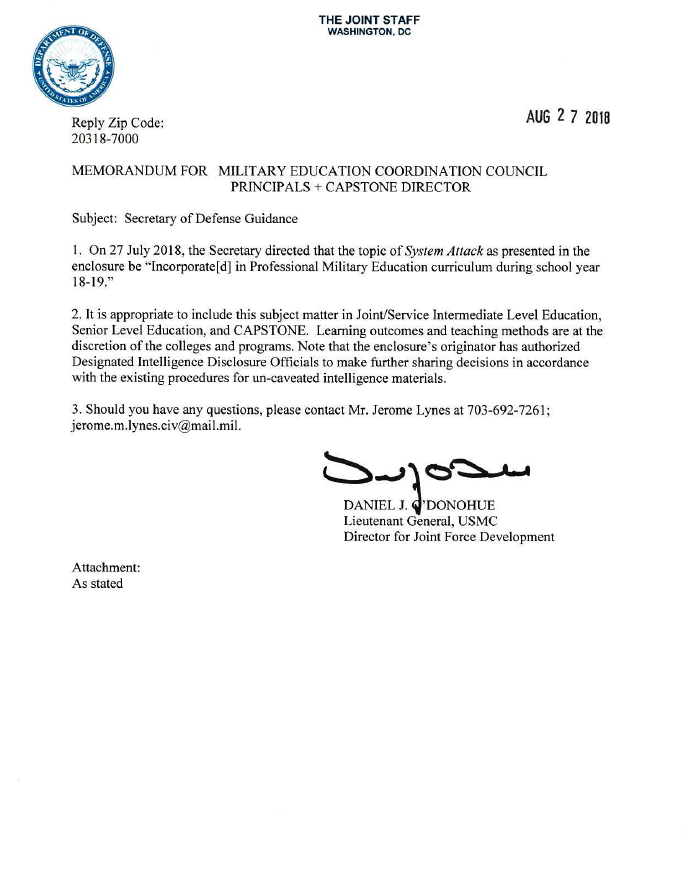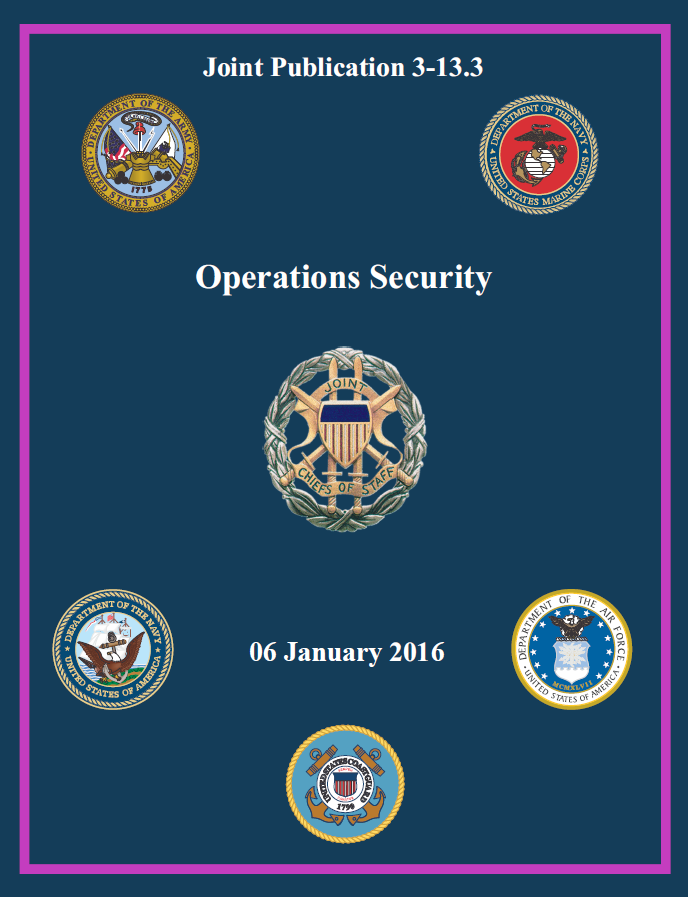Become a Patron!
True Information is the most valuable resource and we ask you to give back.


This paper explores the PLA’s theory of victory in modern warfare and its implications for how China plans to fight the United States. It is a primer on the theory’s foundational concepts, and on what the theory reveals about China’s strategic intent and ambitions.
(U) Executive Summary
(U//FOUO/RELIDO) China plans to defeat powerful adversaries by systematically targeting the linkages and nodes that hold an advanced network-centric force together as a cohesive whole. The PLA calls this theory of victory “systems attack and destruction warfare,” hereafter, “system attack. Authoritative PLA doctrine emphasizes importance of system attack as China’s “basic operational method” of warfare. System attack is perhaps best remembered as “the American way of war with Chinese characteristics,” since the PLA developed the concept based on observing U.S. military victories In the 1990s. Some of the PLA’s writings on systems attack are clearly aspirational, but this does not preclude the effectiveness of the approach, and the doctrine shows that the Pl.A is thinking seriously and realistically about how to defeat.an advanced adversary. The requirements of system attack are actively driving PLA reform, acquisitions, operations and training, and the doctrine telegraphs how Chine intends to fight.
(U) China’s Theory of War: “‘Systems Confrontation•
• (U//FOUO/RELIDO) 1 +1>2. Operational Systems are Greater Than the Sum of their Parts. Fundamental to China’s theory of victory is the PLA’s concept that modem military forces are “‘systems of systems” which are stronger and more efficient than their components would be in isolation because they are linked and networked together through communications and information systems architecture.
• (U//FOUO/RELIDO) Systems Confrontation: The PLA’s theory of modern warfare, therefore, is “systems confrontation,” or competition between these rival “systems of systems,” rather than as a linear contest between discrete units or services of competing armies.
(U) China’s Theory of Victory: System Attack – Win by Fragmenting the Enemy’s Force
(U//FOUO/RELIDO) Create the Conditions for Winning the War: Make 1 +1<2. The PLA plans to defeat an advanced adversary by thoroughly fragmenting the adversary’s system into isolated component parts. The first step of systems attack, therefore, Is to break the essential links and nodes that promote system cohesion in order to sow confusion, degrade communications and disorient adversary leadership. System attack’s ultimate goal ls to paralyze the adversary force, degrading its ability to resist, eroding leadership will to fight and slowing adversary decision-making. China believes that whichever side has a more networked, integrated and cohesive force will have a shorter OODA loop, be able to act more efficiently, and have a better likelihood of victory. Attacks will take place across all domains to degrade the system as a whole rather than focusing on attrition.
• (U//FOUO/REUDO) Fragment the Force: Degrade Data-Flow and C2. The PLA prioritizes degrading or denying an adversary’s use of information early in a crisis and with greater intensity through a conflict. The PLA envisions using kinetic and non-kinetic operations to target an opponent’s data links, communications, military networks, and information systems architecture early in the conflict. Degrading adversary communications amplifies the effects of missile and air strikes against command and control (C2) nodes, including command centers, flagships, and military and civilian leadership.
• (U//FOUO/REUDO) Blind the Enemy. Deny ISR and Early Warning. China will try to degrade adversary decision-making and awareness by targeting its intelligence, surveillance and reconnaissance (ISR) and early warning capabilities, including key space-based collection systems, theater ISR platforms, intelligence centers and satellites.
• (U//FOUO/RELIDO) Own the Initiative: Getting Inside the Adversary OODA Loop. China plans to seize first mover advantage by initiating conflict when the adversary is not prepared. The PLA will try to maintain battlefield initiative by forcing adversaries into a reactive cycle driven by a rapid tempo of unexpected long-range strikes, asymmetric attacks, and harassing attacks.
• (U//FOUO/RELIDO) More Return on Investment Precision Strikes Enable Outsized Effects. The PLA will rely on highly targeted precision strikes against key links and nodes to achieve an outsized effect on the enemy force’s overall stability and effectiveness. Kinetic precision strikes will be complemented by non-kinetic attacks, especially against adversary networks, datalinks, and information systems.
(U/FOUO/RELIDO) Using the Full Against the Fragmentary, Defeating the Slow with the Rapid. System attacks are designed to enable following operations. Once system attacks have fragmented the adversary military so that it cannot operate as a cohesive force, the PLA will commit its broader intact and networked force to combat. Having tilted the battlefield In its own favor, the PLA will carry out supplemental attacks that ensure the adversary•s system does not recover while gradually attriting the adversary’s aircraft, ships, submarines, and other long-range-strike platforms. Sequencing system attacks first enables the PLA to achieve greater effect with lower risk to its force or mission.
• (U//FOUO/RELIDO) China Expects to Have Its System Targeted Too. China expects that the U.S. will try to degrade the PLA’s ability to operate as a coherent force, having developed the systems attack doctrine described above by watching how the United States fights. The PLA therefore is training and equipping the force to operate independently, autonomously, and resiliently, with a notable emphasis on operating in a complex electromagnetic environment.
(U//FOUO/RELIDO) Aspiration Does Not Equal Capability, but It Signals Intent. In PLA doctrine, the rough sequence of operations enabled by systems attacks would be familiar to U.S. military operators: achieve air superiority, then use air superiority to seize maritime superiority and enable ground operations, then use maritime superiority to execute attacks from the sea to the land. The last part of this sequence is aspirational, since China does not currently field ship-launched land attack cruise missiles and its nascent aircraft carrier program is unable to carry out strike warfare. It is, however, how the PLA says it wants to be able to fight, and its acquisitions and training reflect this ambition. China’s doctrine is reflected in its acquisitions and training patterns today. Tomorrow it will be reflected in its operations. The PLA is progressing rapidly. This is how they will fight.
(U) A Note on Sources:
(U//FOUO) The findings of this paper are derived from China’s most authoritative government and military doctrinal writings: The Importance of system of systems confrontation is evident in its inclusion In the 2015 Defense White Paper on Military Strategy. All other details are derived from the 2015 and 2013 editions of the Science of Military Strategy, and .from an unclassified 2018 RAND Corporation study, Systems Confrontation and System Destruction Warfare: How the Chinese People’s Liberation .Army Seeks to Wage Modem Warfare. General assessments on PLA acquisitions, training and operations are reflected in a wide body of unclassified open source materials from 2000 through the present For ease of sourcing, we cited the 2017 Department of Defense Annual Report to Congress on Military and Security Developments Involving the People’s Republic of China.




You must be logged in to post a comment.